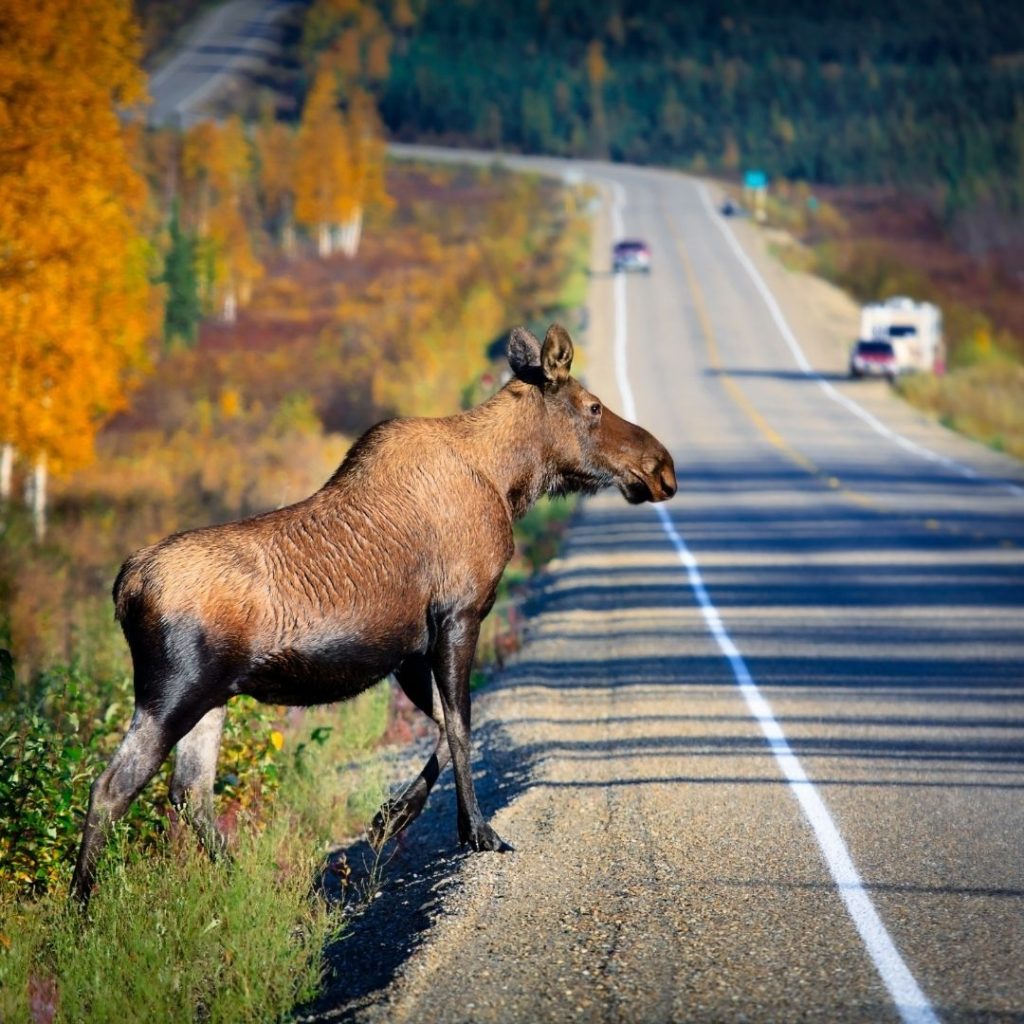Wildlife-vehicle collisions can be deadly to animals and humans.
Wildlife-vehicle collisions can have serious consequences. Road Watch BC aims to prevent crashes by getting the public to report wildlife sightings.
Wildlife-vehicle collisions can be deadly. Animals and people can be killed or injured. A few years ago, a worker driving on a forest service road swerved to avoid a deer and rolled down an embankment. Last year, a worker driving on a highway to a meeting was injured when a bull moose came out of a ditch and “T-boned” the vehicle.
For the many workers who drive on roads where wildlife crossings are common, knowing how to avoid collisions is critical.
Enter Road Watch BC. This organization gathers information on wildlife sightings from citizens living in B.C.’s Elk Valley region. Road Watch BC uses the data to better understand wildlife crossings and where collisions with vehicles may occur.
In its first year of operation, 250 participants shared more than 1,000 observations via a smartphone app and a web-based mapping tool.
“The first year has been a huge success,” says environmental scientist Beth Millions, project lead for Road Watch BC. “We are working to continually expand the project and increase community education.”
So far, Road Watch BC has seen some interesting trends in terms of where animals tend to crossroads. But they can’t draw conclusions until they’ve been collecting data for two years. Then they’ll be that much closer to finding solutions.
“There are mitigation strategies that have already proven to be effective, including building wildlife crossing structures such as overpasses and underpasses with fencing,” says Beth, adding that these strategies have reduced collisions by more than 80 percent in places like Banff National Park.
Preventing collisions with wildlife
Wildlife-vehicle collisions are not always preventable, but in most cases they are. Here are some precautions Beth suggests drivers take to reduce their risk of getting into an accident with wildlife:
- Slow down, especially in areas where you know wildlife tends to hang out, or anywhere you see a warning sign for wildlife crossing.
- Drive alert and cautiously, especially between dusk and dawn.
- Actively scan the road ahead and areas alongside the road for signs of wildlife.
- Regularly maintain your vehicle, so that the headlights, wiper blades, and brakes are working properly. This will allow you to see and respond to wildlife on the road more quickly.
- Wear your seatbelt. This is critically important, as it will help reduce the damage to your body in the event of a collision.
Thanks to Beth, her team, and all participants working to keep roads safer for wildlife and road users. For more information or to contribute your wildlife observations to the growing dataset, check out www.roadwatchbc.ca or contact Beth directly at info@roadwatchbc.ca.
To learn more about similar projects, see Wildlife Accident Reporting System – Protecting B.C.’s Wildlife from the B.C. Ministry of Environmental Protection & Sustainability.
Reprinted from October 2017
Also see:
Myth Busters – Wildlife collisions don’t just happen! from SafetyDriven/Trucking Safety Council of BC
